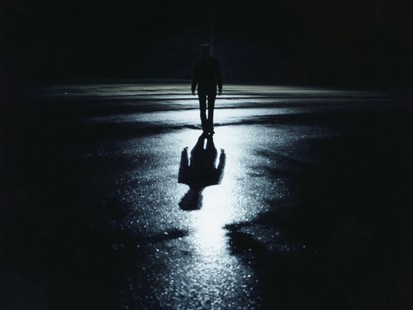 As the Sun moves into Scorpio, the days continue to darken, the clocks will soon fall back an hour, and we continue the slow movement toward the shortest day of the year—that is to say, the day with the least amount of light and the most amount of darkness: the Winter Solstice.
Western culture has a curious obsession with light. Ever since the mythological Prometheus stole fire (light) from the gods and handed it to the human beings he created out of clay, those humans have had a strong desire to carry this light, often quite literally, into dark places to see what their mysteries contain. Built into the very mythological-archetypal definition of “hero” is the need to head into the dark underworld to slay the terrible creature within and retrieve the bright and shiny reward.
As the Sun moves into Scorpio, the days continue to darken, the clocks will soon fall back an hour, and we continue the slow movement toward the shortest day of the year—that is to say, the day with the least amount of light and the most amount of darkness: the Winter Solstice.
Western culture has a curious obsession with light. Ever since the mythological Prometheus stole fire (light) from the gods and handed it to the human beings he created out of clay, those humans have had a strong desire to carry this light, often quite literally, into dark places to see what their mysteries contain. Built into the very mythological-archetypal definition of “hero” is the need to head into the dark underworld to slay the terrible creature within and retrieve the bright and shiny reward.
The quest for more and more light became particularly noticeable—perhaps epidemic—during the 18th century’s Age of Enlightenment, when exploring the darkness and lighting it up became of supreme importance. With the discovery of electricity came the ability to channel light. And while the sun never set on the British Empire, across the pond the creation of the United States of America brought with it the continued hope of an ever-more-enlightened nation, eventually leading to the torch-light-bearing Statue of Liberty, symbolizing the U.S. as a carrier of light and liberation for the world.
From “daylight saving time” to “You Light Up My Life” to “Days of Our Lives” to “Guiding Light” to popular modern painter Thomas Kinkade trade-marking himself as the “Painter of Light,” it’s pretty clear that we’re not particularly fond of the darkness.
This is mirrored by the terrible dangers lurking in the dark as seen in popular horror movies: there’s the razor-fingered burn victim named Freddy haunting our nightmares; the hockey-masked killer named Jason stalking the woods; the puzzling Jigsaw wreaking havoc on our psychological sanity; or countless other more generic, warped caricatures. Darkness is typically the storage container for our deepest and ugliest fears, worries and troubles.
More recently, Harry Potter has fought against the powers of darkness with his light-bringing magic wand. The popular Rick Riordon modern mythology books all began with “The Lightning Thief”—a reinvention of the Prometheus myth. And the uber-popular Twilight series involves the famed creatures of the night—vampires and werewolves—emerging into the daylight, perhaps because, symbolically, when we shine so much light into the dark we not only see what it contains, but what it contains will have nowhere to hide or mind its own business.
 Perhaps it’s time to view darkness from a different vantage point. I look back quite a few centuries and see that Celtic culture, for example, did not particularly fear darkness. They understood and appreciated darkness in a fundamentally different manner. Says John O’Donohue:
Perhaps it’s time to view darkness from a different vantage point. I look back quite a few centuries and see that Celtic culture, for example, did not particularly fear darkness. They understood and appreciated darkness in a fundamentally different manner. Says John O’Donohue:
“The Celtic Underworld wasn’t like the classical Underworld where there was darkness and where it was Hades. The Irish-Celtic Underworld was the secret mother-source of all fertility.”
It’s intriguing to view darkness as a fertile source of creativity. After all, just as crops grow up from the underworld, so too do our own human imaginations. To access images from dreams all anyone has to do is close their eyes and go to sleep. The images pulled from the necessary time of darkness, from places we can’t see no matter how much light we shine, are the often stunning and beautiful images that have inspired artists for centuries. Not all darkness is filled with nightmares. Darkness and imagination brought forth Vincent Van Gogh’s “Starry Starry Night” and countless other inspired works.
I love the quote, “When it is dark enough, you can see the stars.” Considering that a field such as astrology, for example, is a direct result of what the imagination glimpses when looking at the stars, and the resulting capacity to infer meaning from the deep recesses of the imagination, it’s good to give credit where credit is due. Bring on the night!
Modern western culture is as addicted to caffeine, stimulants, and “waking up” (Caribou Coffee advertises with the slogan, “Life is short – stay awake for it”) as much as it’s addicted to sleeping pills and other narcotics. This is a sure sign that something is amiss. Perhaps it’s time to appreciate the light that has been brought to the world, and to re-imagine our relationship with darkness and simply let the dark be the dark.